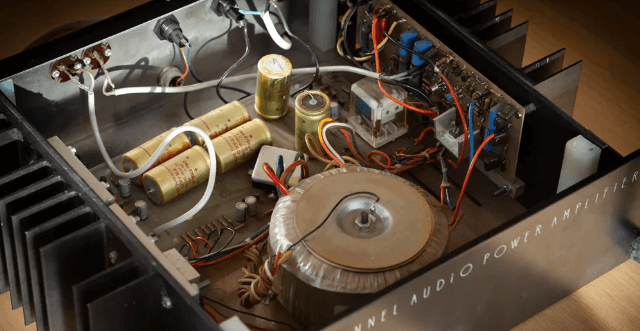Understanding the Basics
A 2-channel power amplifier, as the name suggests, is an audio device designed to amplify audio signals across two channels. These channels typically correspond to the left and right stereo channels, making them ideal for powering stereo speaker systems. But what exactly can you do with a 2-channel amp? Let’s dive in.
The Core Function: Stereo Sound
The most obvious use for a 2-channel amp is to power a stereo speaker system. This is where the amp truly shines, delivering a rich, immersive soundstage that transports you into the music. Whether you’re enjoying classical symphonies, rock concerts, or intimate jazz performances, a 2-channel amp can bring the music to life.
· Stereo Imaging: A well-matched 2-channel amp and speaker system can create a convincing illusion of musicians and instruments occupying specific positions on the soundstage.
· Depth and Width: Experience the music’s depth and width as instruments and vocals appear to come from different points in the room.
· Dynamic Range: Hear the subtle nuances and powerful crescendos with clarity and precision.
Beyond Stereo: Other Applications
While stereo sound is the primary focus of 2-channel amps, they can be used in other configurations as well:
· Mono Block Configuration:Some 2-channel amps can be configured as monoblocks, where each channel powers a single speaker. This can provide increased power and stability for demanding loads.
· Bridged Mode: In certain cases, the two channels of a 2-channel amp can be combined to create a single, more powerful channel. This is often used to power subwoofers or center channels.
· Home Theater Systems: While not ideal for surround sound setups, a 2-channel amp can be used to power the front left and right channels in a home theater system. However, dedicated home theater amplifiers are generally better suited for this purpose.
Choosing the Right 2-Channel Amp
Selecting the appropriate 2-channel amp depends on several factors:
· Speaker Impedance: The amp’s power output should be matched to the impedance of your speakers.
· Power Requirements: Consider the size of your listening room and the desired listening levels to determine the necessary power output.
· Sound Signature: Different amps have different sonic characteristics, so it’s essential to choose one that complements your speakers and personal preferences.
· Features:Some amps offer additional features like balanced inputs, remote control, or room correction.
Amplifier Types and Matching Amps to Speakers
Types of 2-Channel Amplifiers
Understanding the different types of 2-channel amplifiers can help you make an informed choice for your audio system. Here’s a brief overview:
· Class A: Known for their warm, detailed sound, Class A amps are inefficient and generate a lot of heat. They are typically found in high-end audiophile equipment.
· Class AB: A compromise between Class A and Class B, offering a balance of sound quality and efficiency. This is the most common type of amplifier found in home audio systems.
· Class B: More efficient than Class A but can introduce crossover distortion, which can affect sound quality.
· Class D: Highly efficient and compact, using digital switching technology. While they have improved significantly in recent years, some audiophiles still prefer the sound of analog amplifiers.
Matching Amps to Speakers
Properly matching your amplifier to your speakers is crucial for optimal performance and longevity. Here are the key factors to consider:
· Impedance: This is the measure of a speaker’s resistance to electrical current. Most speakers have an impedance of 4, 6, or 8 ohms. It’s essential to choose an amp that can handle your speakers’ impedance without strain.
· Power Handling: The amplifier’s power output should be matched to the speaker’s power handling capacity. Overpowering speakers can damage them while underpowering them can limit their performance.
· Sensitivity: This measures how efficiently a speaker converts electrical energy into sound. More sensitive speakers require less power from the amplifier.
· Sound Signature: Amplifiers and speakers have different sonic characteristics. Experimentation and listening tests are essential to find a combination that suits your preferences.
See also: 3 Reasons Your Business Isn’t Selling – Especially When Website Traffic is High
General Guidelines:
· Amplifier Power: Aim for an amplifier with a power output that is slightly higher than the speaker’s power handling capacity.
· Impedance Matching: Ensure the amplifier can handle the impedance of your speakers.
· Speaker Sensitivity: Consider the sensitivity of your speakers when choosing amplifier power.
· Listening Tests: The best way to determine if an amp and speaker combination is right for you is to listen to them in your own system.
Additional Tips
· Cable Quality: High-quality speaker cables can make a significant difference in sound quality.
· Room Acoustics: The acoustics of your listening room can affect the overall sound.
· Budget: Determine your budget before shopping for an amplifier and speakers.
By carefully considering these factors, you can create a 2-channel audio system that delivers exceptional sound quality and performance.
Conclusion
The 2-channel power amplifier is a versatile component that can significantly enhance your audio experience. Whether you’re a music enthusiast seeking immersive stereo sound or a home theater aficionado looking for a powerful front stage, a well-chosen 2-channel amp can deliver exceptional performance.


